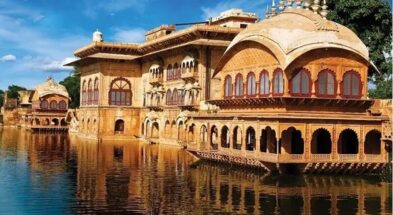Renowned International architecture studio Foster+Partners, tasked with the responsibility of revamping the city of Lusail in Qatar, has unveiled the designs of the ‘Lusail Towers’. This happens to be four waterfront skyscrapers, touted to be “catalyst for a new central business district in the city”. The quartet comprises two 70-storey skyscrapers and two 50-storey skyscrapers with an aluminum exterior and will house the headquarters of the QatarNational Bank, Qatar Central Bank, and Qatar Investment Authority alongside other global organizations like Qatari Diar.

Foster + Partners has been engaged in redesigning the city since 2018, to prepare for the 2022 FIFA World Cup, which will be held in Lusail. The towers will be built symmetrically around a plaza at the end of the grand boulevard that links the new football stadium to the waterfront. “The elliptical footprints of the towers morph through 90 degrees as they rise, gently shifting the viewing axis outward and offering stunning views of the surrounding city and waterfront,” said Roger Ridsdill Smith, head of structural engineering at Foster + Partners. The 1.1 million-square-meter landmark will have a central concrete core surrounded by sixteen inclined columns around the perimeter. The podium buildings at the base surrounding each tower will have cafes, shops, and restaurants.
Read More: The Contemporary Style Of Architecture Is Here To Stay
The morphing structure along with the facades will help in limiting the exposure to the sun as the architects designed the structure in line with climate conditions. “Environmental design was a key driver in the design”, Piers Heath the Head of Environmental Engineering at Foster + Partners said. The towers include active systems design, including centralized thermal storage using innovative phase change materials, high-pressure hydronic systems, demand-controlled ventilation, efficient LED lighting, and advanced automation controls. Apart from these systems, molded concrete panels will give the buildings a high thermal mass, with minimal punched windows that reduce the amount of solar heat to the interior spaces, targeting 4 stars in the regional Global Sustainability Assessment System (GSAS).



















